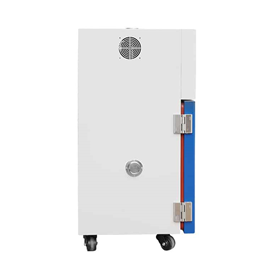
Rain test chambers play a significant role in evaluating the performance and durability of products under controlled rain conditions. With advancements in technology, rain test chambers have evolved to offer more precise and realistic simulations. In this article, we will explore the latest advances in rain test chamber technology, highlighting their benefits and advancements in accurate testing.
1. Automation and Control Systems
Advances in rain test chamber technology have led to the incorporation of sophisticated automation and control systems. These systems allow precise control of variables such as rain intensity, duration, temperature, and humidity. Improved automation enables manufacturers to customize test parameters easily, ensuring accurate replication of real-world rain conditions. The ability to control testing variables with precision enhances the reliability and reproducibility of rain test results.
2. Realistic Rain Simulation
Modern rain test chambers employ advanced nozzle designs and water distribution systems to create more realistic rain simulations. The nozzles are designed to replicate various raindrop sizes and velocities, closely mimicking different rainfall patterns. By accurately simulating rain, manufacturers can assess product performance under specific rain conditions, making informed design decisions towards waterproofing and durability improvements. Realistic rain simulations also promote greater confidence in product performance before market release.
3. Integrated Environmental Conditions
Incorporating integrated environmental conditions is a significant advancement in rain test chamber technology. Chambers are now equipped to simulate simultaneous exposure to rain, temperature variations, humidity, and sunlight. By replicating multiple environmental stressors, manufacturers can gain a more comprehensive understanding of a product’s performance in real-world scenarios. This integration provides valuable insights into potential vulnerabilities to weather-related conditions, enabling product enhancements to ensure durability and functional integrity.
4. Multi-Axis Water Spraying
Traditional rain test chambers typically simulate rain from a single direction. However, advances in technology now allow for multi-axis water spraying. This innovation enables rain test chambers to spray water from multiple directions simultaneously, replicating rain impact from various angles. Multi-axis water spraying provides a more accurate evaluation of product resistance to water ingress. Manufacturers can assess the vulnerability of products under different rain angles, ensuring complete protection even in challenging conditions.
5. Simulated Wind Effects
Wind is a critical factor in real-world rain scenarios, as it can dramatically affect rain impact and penetration. With technological advancements, rain test chambers now have the capability to simulate wind effects during rain testing. By introducing controlled airflow into the chamber, manufacturers can evaluate product performance under combined wind and rain conditions. Simulating wind effects enhances the accuracy of rain test results and provides a more realistic representation of product performance in outdoor environments.
6. Advanced Data Acquisition and Analysis
Modern rain test chambers feature advanced data acquisition and analysis capabilities. Sensors installed within the chamber can measure parameters such as water flow rate, pressure, temperature, and humidity. These sensors provide real-time data that can be analyzed to assess product performance accurately. Data analysis tools allow for efficient interpretation of test results, enabling manufacturers to identify areas of improvement and make informed decisions for product enhancement
Conclusion
Advances in rain test chamber technology have revolutionized the way manufacturers evaluate product performance in simulated rain conditions. Automation and control systems, realistic rain simulations, integrated environmental conditions, multi-axis water spraying, simulated wind effects, and advanced data acquisition and analysis have significantly improved the accuracy, precision, and reliability of rain testing. These advancements enable manufacturers to enhance product durability and functionality while ensuring customer satisfaction. As technology continues to evolve, rain test chambers will continue to play a vital role in product development processes, enabling manufacturers to create robust and dependable products that can withstand the challenges of rainy environments.

